After spending the day at the Okefenokee Swamp Park near Waycross, we headed to the Georiga coast to continue our trip. We spent the night in Tybee Island, followed by a morning walk around Savannah, just twenty miles away.
Savannah is chock-full of historical significance, especially since it’s the oldest city in Georgia. When General James Oglethorpe founded the area in 1733, I’m sure he didn’t expect Savannah would become the 18th largest city in the US less than a century later.
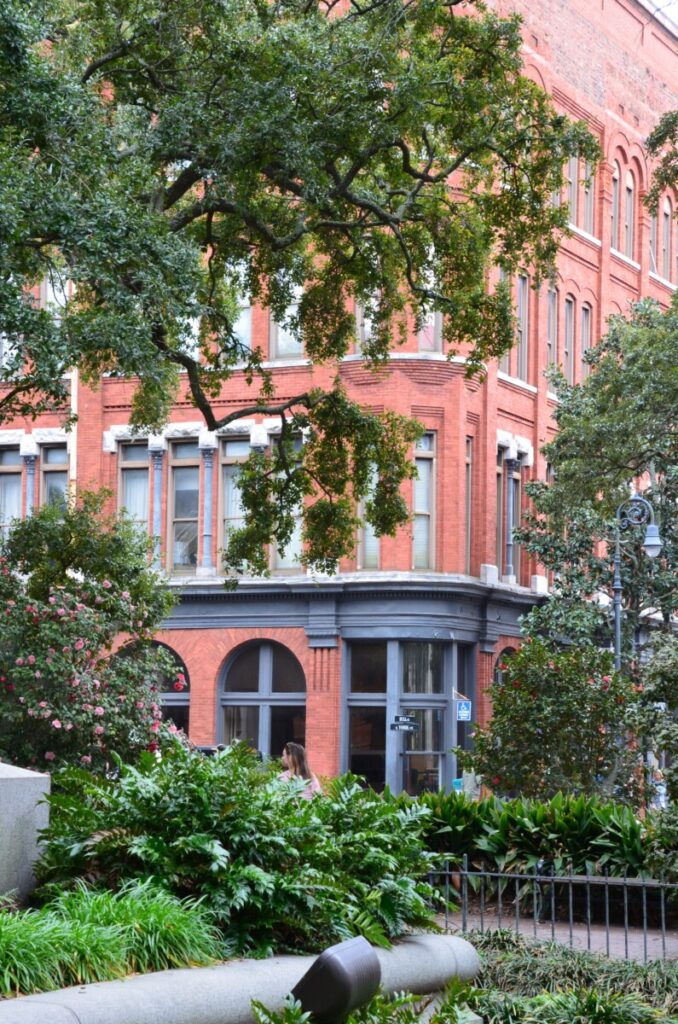
The biggest driver of Savannah’s growth was the cotton industry. In 1793, Eli Whitney invented the cotton gin just nine miles upriver at Mulberry Grove. The US, particularly the southern states, accounted for 75% of the world’s cotton supply by 1860. Although cotton is no longer king, the shipping industry (and Savannah) continues to grow. Today, the Port of Savannah is the third largest in the US, just behind Los Angeles and New York.
Savannah Historic District
The best way to experience Savannah’s charm and history is to walk around the 2-mile Historical District. Oglethorpe laid out the town in a grid around grassy open squares. Today, the area retains 22 of these squares filled with trees, plants, monuments, and park benches.
River Street and Factor’s Row
You’ll want to start exploring the city below the bluffs at River Street. Head down the ramps or stairs and you’ll walk along the cobblestone road made from ship’s ballasts.
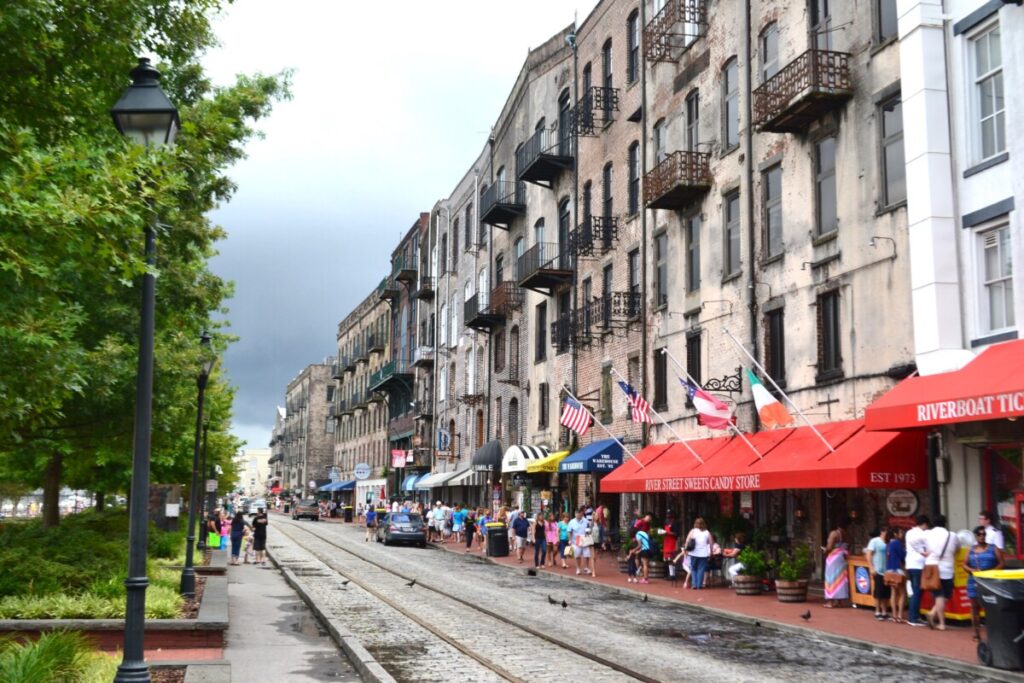
Pricing for cotton was determined by factors and their offices usually sat on the third and fourth floor of these buildings. To make it easier to get to their office from the bluff area, primarily along Bay Street, sets of bridges and walkways were added to the backside and named Factor’s Row.
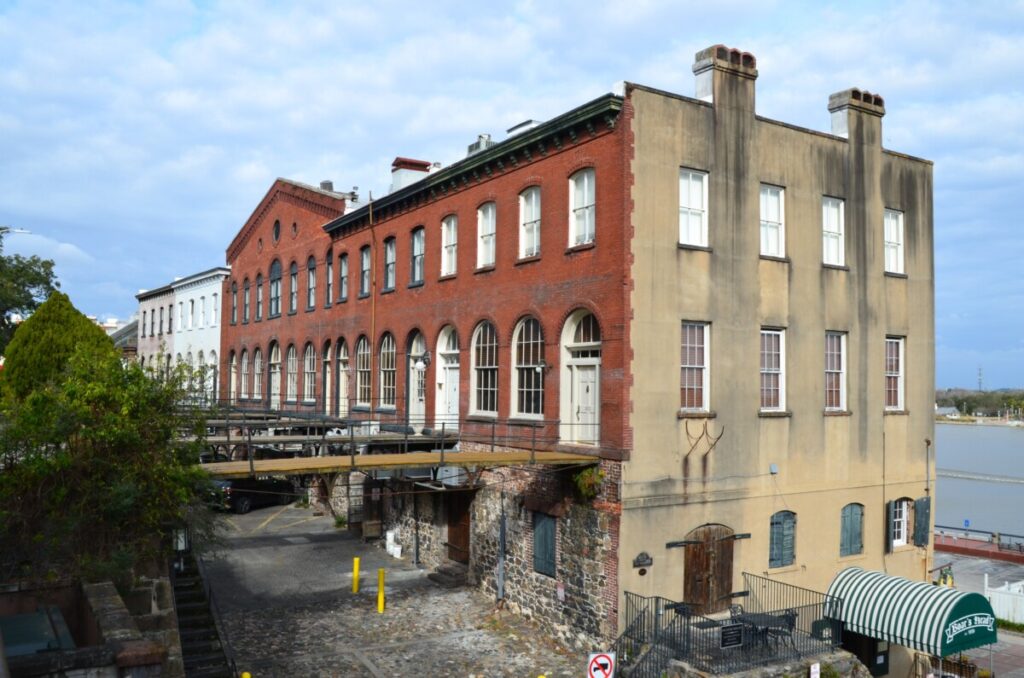
During the reign of cotton, River Street consisted primarily of blue-collar dock workers, wharves, and warehouses, while Factor’s Row was where white-collar workers did business. Most people think the cotton industry died after the Civil War. However, cotton shipments remained strong through the end of the 19th century prompting the construction of the Old Cotton Exchange in 1887, a new City Hall (in the opening picture) in 1906, and many other structures standing today.
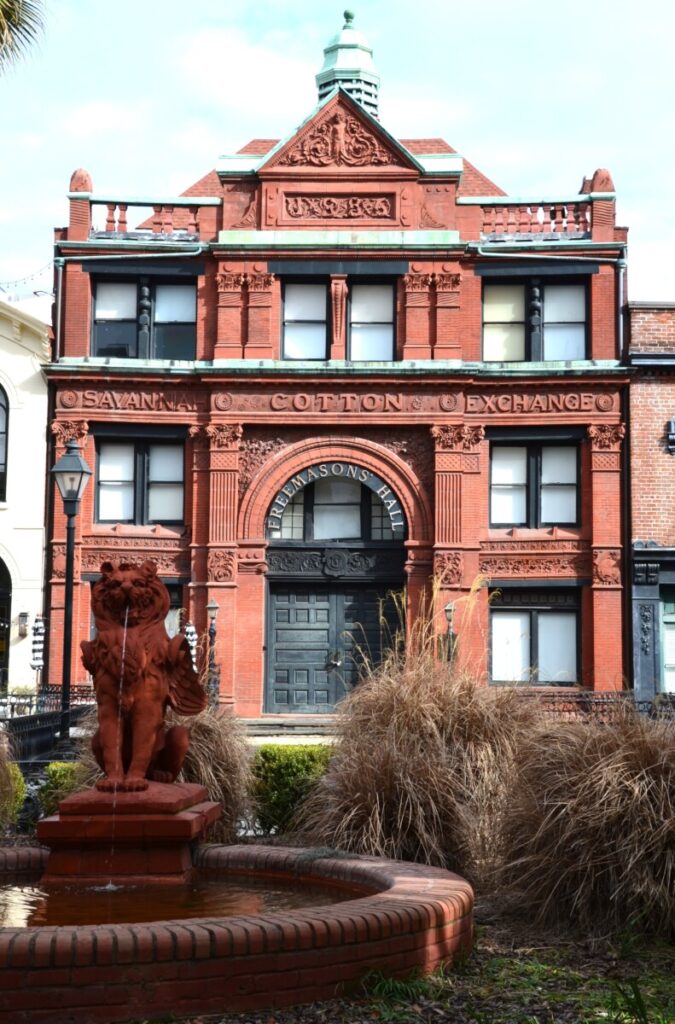
In the 1920s, the boll weevil decimated the cotton crops across the South. This, coupled with the Depression, caused the once bustling area to fall into decay. As more residents moved further away from the city center, contractors razed the Old City Market at Ellis Square for a parking deck in 1954 and tore down the luxurious six-story DeSoto Hotel (1890) with a 15-story hotel of the same name. Click on the links above to see pictures of the old structures on the local news station WSAV website.
After a group of women banded together to prevent the demolition of the historic Davenport House in the mid-1950s, preservation efforts began to restore the historical area. In the 1990s, the best-selling novel “Midnight in the Garden of Good and Evil” by John Berendt brought an influx of tourists to the area, further boosting an appreciation for historic sites.
Plant Riverside District
Until recently, one area that remained industrial and closed to the public was the former site of the Riverside Station Power Plant. In 1912, the need arose to provide electricity to residents. Savannah Power built a “modern” power plant (originally powered by coal) at the western end of River Street. Throughout its 92-year history, the plant expanded to over four acres until closing in 2005.
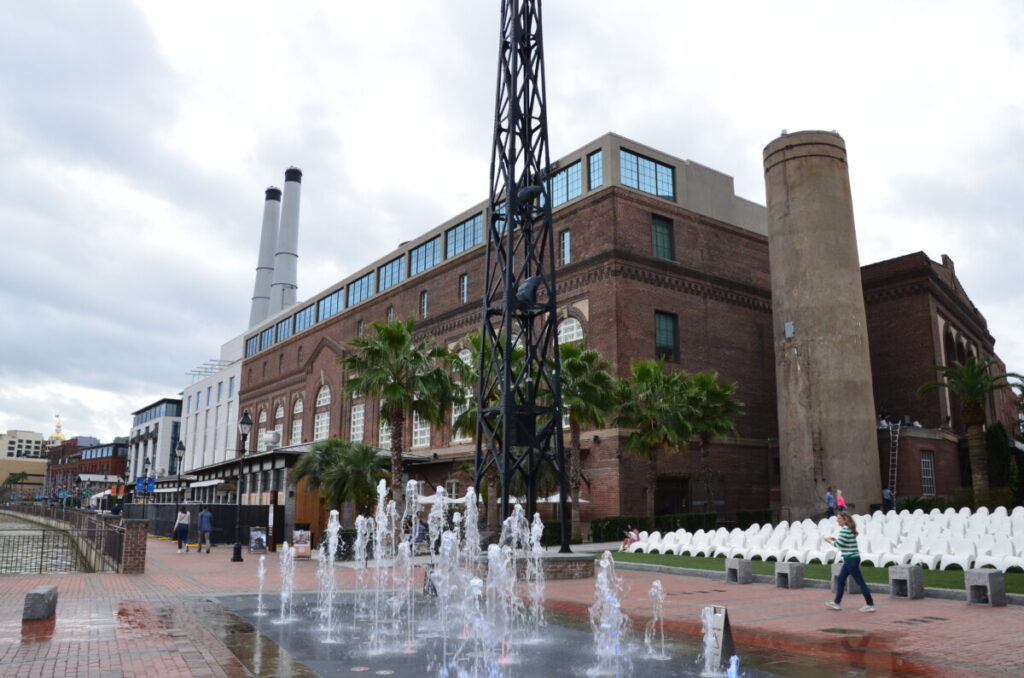
Richard C. Kessler, a former CEO of Days Inn and founder of The Kessler Collection, envisioned a multi-use development that would retain the area’s historical significance in 2012. Construction on the $270 million project began in 2016. Today, the completed area features a riverwalk, restaurants, bars, retail shops, parks, music venues, and a hotel complex.
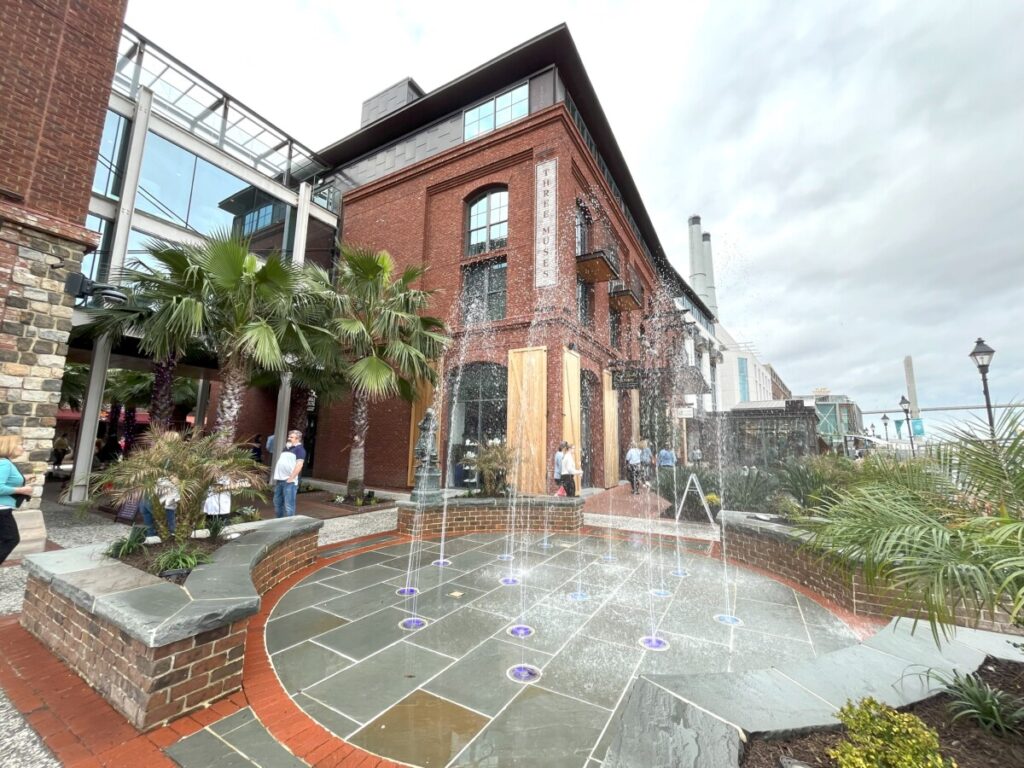
The JW Marriott offers 440 rooms spread across three separate buildings in the District: The Power Plant, the largest of the three, Three Muses, with a smaller, European feel, and the Atlantic, with a maritime vibe and District Live stage space.
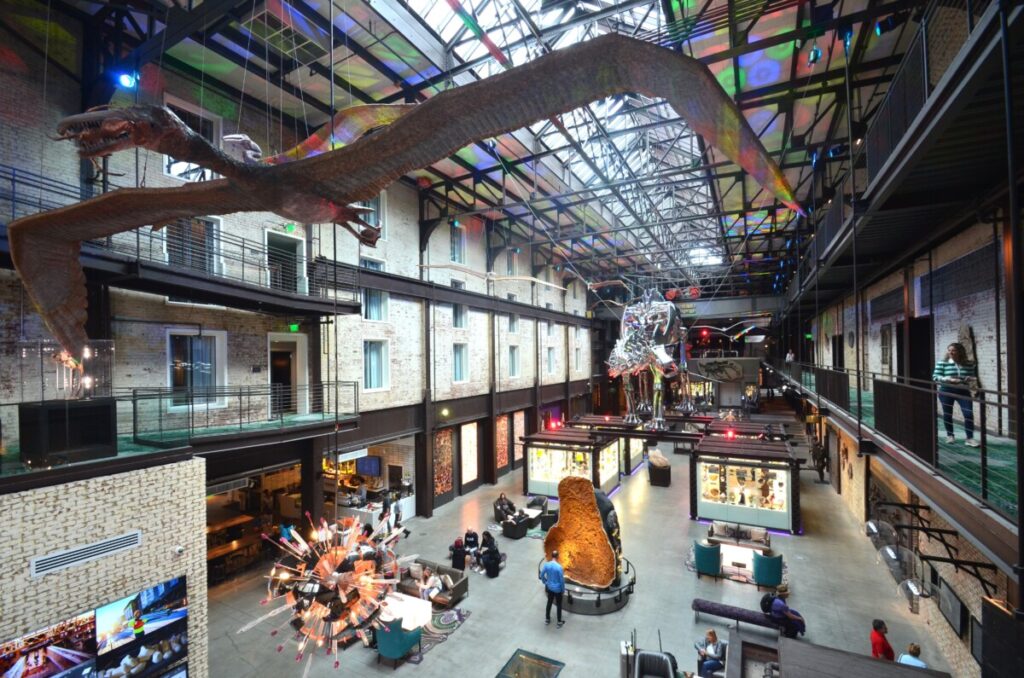
Walking into the lobby of the JW Marriott – Power Plant, visitors see the original skylights, masonry smokestacks, and steel girders. A large chrome dinosaur skeleton hangs above and the interior boasts large geodes, minerals, and fossils. The lobby is a museum unto itself. But if that doesn’t appeal to you, head to the Electric Moon, a rooftop lounge on the sixth floor for views of the Savannah River and the city.
More of the Savannah Historic District
We’ve barely scratched the surface of Savannah’s Historic District. There are blocks to walk, squares to see, and plenty of historic homes to tour! From the river, you’ll come up the bluff to Bay Street, a tree-lined thoroughfare. From here to Oglethorpe Street, visitors will walk through the “downtown” area with plenty of hotels, bars, and restaurants.
Today’s downtown looks vastly different than it did 100 years ago. Near Johnson Square, several early skyscrapers, including Liberty Bank at eight stories (1904), National Bank at ten stories (1906), and Savanah Bank and Trust at 15 stories (1911), emerged. All but one were torn down in the 1970s.
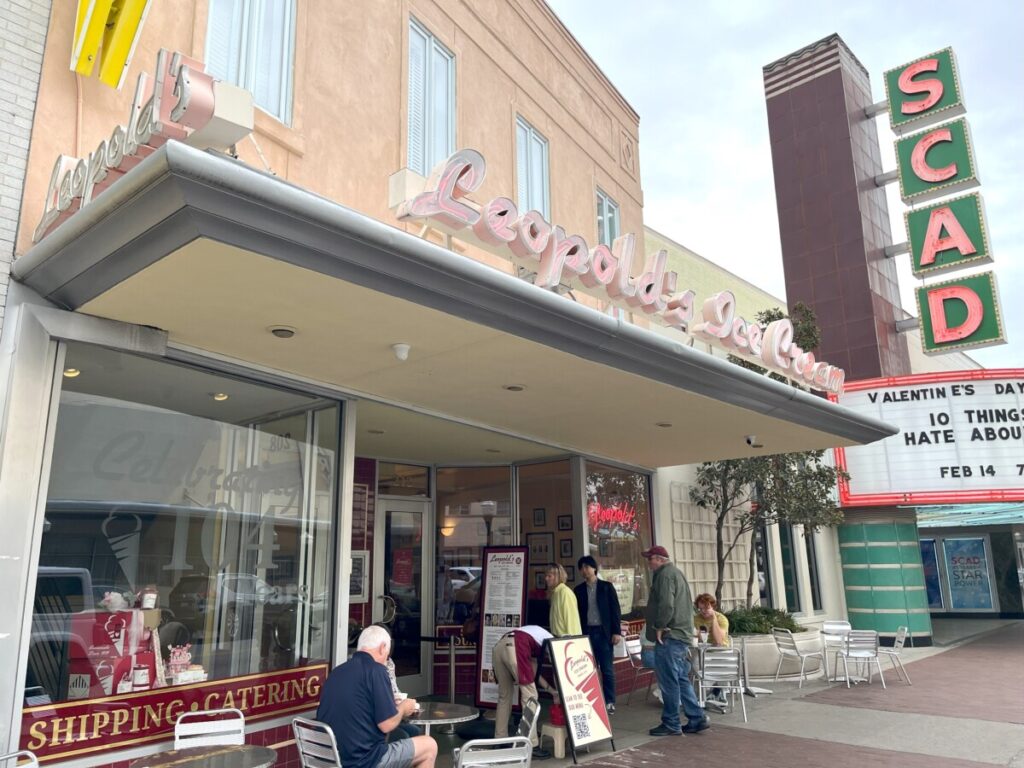
For decades, the main shopping district centered along Broughton Street. Adler’s (the largest department store in Georgia), Levy’s Department Store, Hogan’s Department Store, Kress Five & Dime, Globe Shoe Store, Schwobilt’s Men’s Clothing, and many other establishments flanked both sides of the street. Large theatres also dominated the downtown area as well.
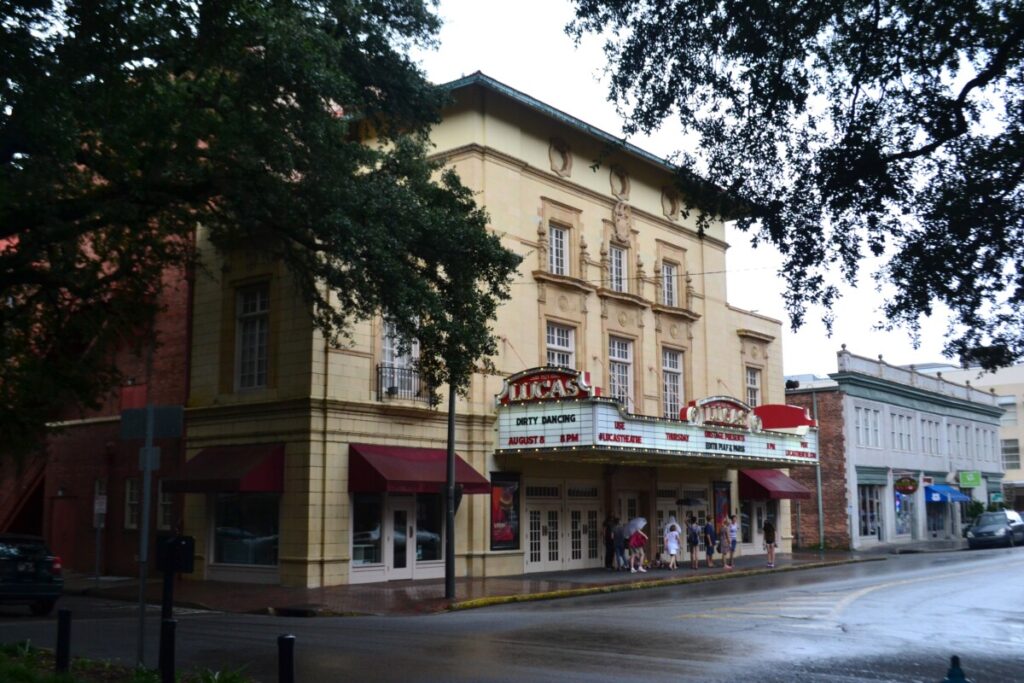
Broughton Street’s ultimate demise coincided with the opening of Oglethorpe Mall in 1969 when many of the downtown stores relocated. By the early 1980s, vacant buildings occupied the former business district, creating somewhat of a ghost town.
Two things brought back the fledgling area: The Broughton Street Renewal Plan in 1986 and the creation of SCAD (Savannah College of Art & Design) in 1979. The college repurposed many of these old buildings for dorms, classrooms, a library, a theatre, and more. In total, SCAD occupies 70 buildings in the historic district. With students in the area, the need arose for restaurants and retail shopping. Now, you’ll find popular shops such as L’Occitane, Gap, and J Crew, as well as residential loft spaces in these buildings, restored to their former glory.
Historic Homes in Savannah’s Historic District
As you walk further from the river, you’ll find more residential areas. After we put our name on the list at Collins Quarter Cafe and Bar, we walked past the Juliett Gordon Low birthplace. Low, born in 1860 to the prominent Gordon family, founded the Girls Scouts. Outside the grand home, we saw a troop selling Girl Scout cookies!
Other historic homes to see include the Owens-Thomas House, The Andrew Low House (where Juliett Gordon Low spent her adult life), and the Sorrel-Weed House. Fans of “Midnight in the Garden of Good and Evil” can tour the Mercer-Williams House, built by local songwriter Johnny Mercer’s great-grandfather.
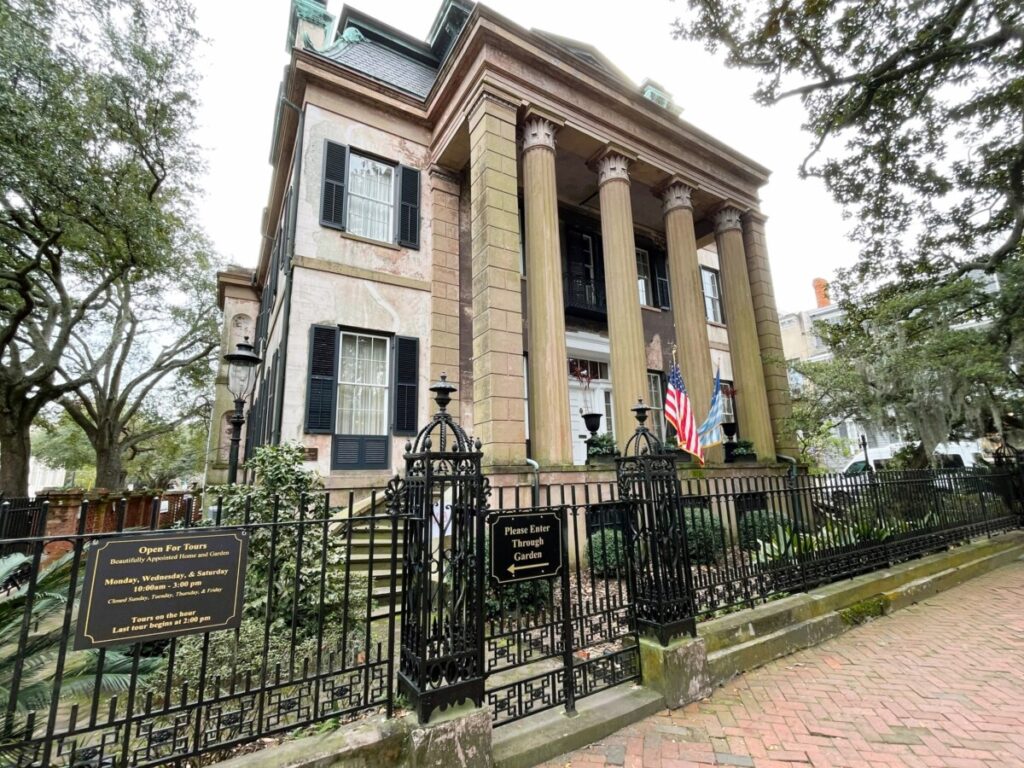
On previous trips to Savannah, we’ve toured both Juliett Gordon Low houses and the Owens-Thomas House. Another house we walked passed and I want to tour on a longer visit is the Harper-Fowlkes House. Alida Harper Fowlkes was one of the women who spearheaded Savannah’s conservation efforts. She also restored ten buildings in the Historic District with her own money. One of these is the Olde Pink House.
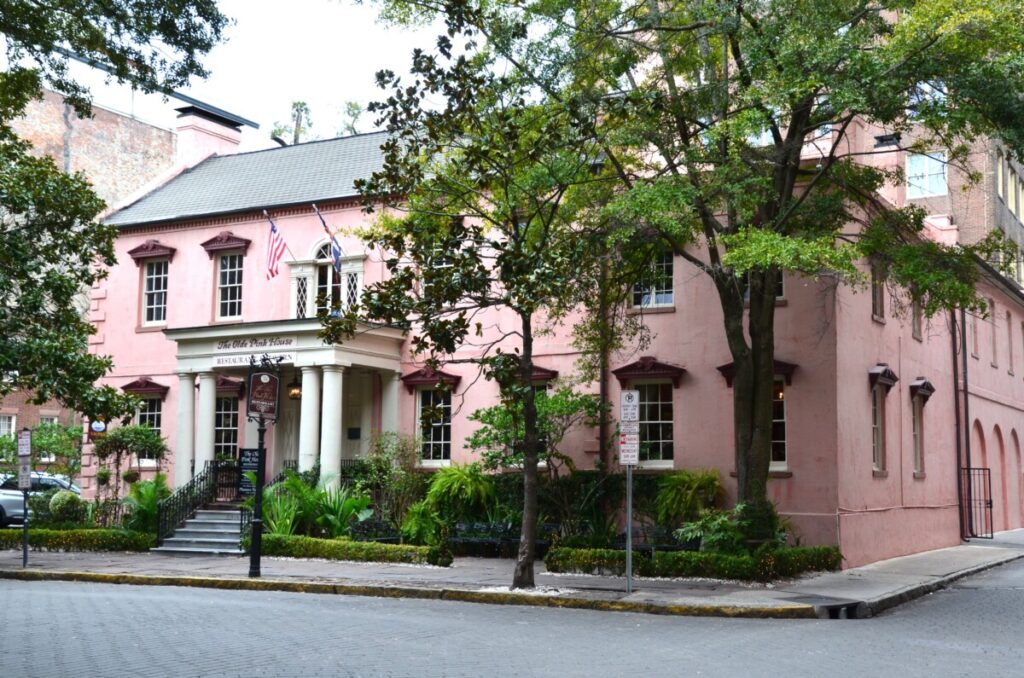
The mansion, built in 1771 by James Habersham, later became Planters Bank through the Civil War. Fowlkes opened the Georgian Tea Room in 1929 and painted it the bright pink color it is known for today. In previous years, the red clay brick would bleed through the plastered white wall, but owners continually painted over it. As a result of Fowlkes’ preservation of the house, subsequent owners kept up the property. Since 1971, The Olde Pink House has been a fine dining establishment that is one of our favorites.
More Savannah Information
If you find yourself with only a few hours in Savannah, a walk through the Historic District is a must. You don’t need a guided tour (if time doesn’t allow) as the city provides informative plaques at most historical sites and the layout is easy to navigate. If nothing else, find a park bench and enjoy one of Savannah’s squares.
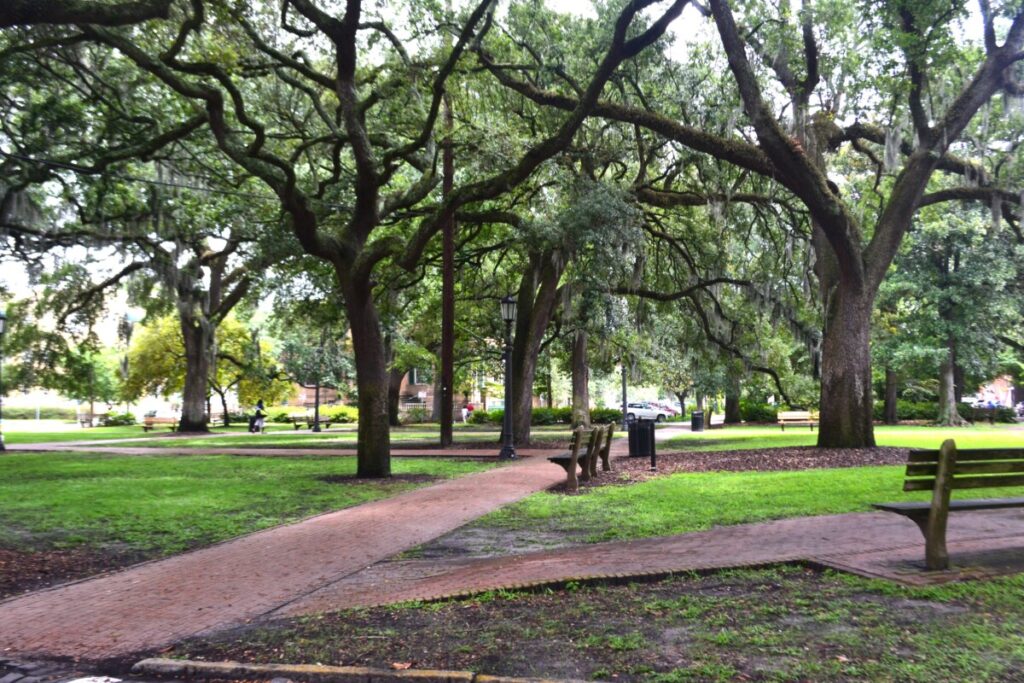
Savannah offers several visitor centers in the Historic District. The largest one is on MLK Blvd. and offers brochures on the area. Another one is conveniently located on River Street. You’ll find maps and recommendations on restaurants and tours. Visit the site here.
